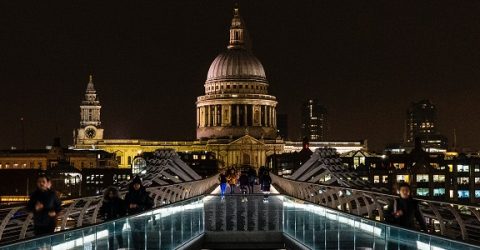What did the internet look like in the year 2000?
The internet in the year 2000 was a very different place to 2021, but some design themes have endured amid the inevitable growing pains

It seems remarkable with the benefit of hindsight, but the internet was relatively new and unknown as this century dawned.
There were ‘only’ ten million websites and 361 million internet users in the year 2000. Today, there are 1.75 billion websites and two billion registered users of Facebook alone.
(How many of those people actually use Facebook is another matter entirely).
Microsoft’s Internet Explorer was the dominant web browser simply because it was bundled free with Windows, and most web-enabled machines at the time were desktop PCs.
This was an age before 3G mobile, let alone 4G and 5G. It was an age of dial-up rather than broadband. And it was an age before social media, fake news, smart devices or streaming.
MoreHow web design has changed since the 90s
So what did internet in the year 2000 look like? And are there any similarities between Web 1.0 and today’s slick, multimedia-powered internet?
Picture me broken
Internet in the year 2000 was a fairly static text-and-photos affair, and the latter were often represented by a blank square with a graphic of a broken picture frame.
The ubiquity of missing photos was ironic considering there was little else to break up slabs of written content.
Where photos did appear, they tended to be thumbnails to minimise loading times – this was an age when every kilobyte of data had to be laboriously piped through dial-up modems.
Webpages also lacked the fluid design of modern design platforms like WordPress. Images, menu bars and breakout boxes had to be coded into separate tables.
Loading these tables further elongated the wait for content to display, while the rigid programming they necessitated could leave them looking awkward on certain screens.
Media studies
By 2000, the World Wide Web had been in existence for nine years. Some web designers were attempting to advance upon default off-white backgrounds and Times New Roman copy.
Colourful text was being adopted, and with Comic Sans still years away from being mocked and reviled, it became as ubiquitous as sky-blue hyperlinks.
Further on-page colour and texture took the form of Adobe Flash inserts – another hallmark of the internet in the year 2000, which was recently consigned to the history books.
Designers brave (or foolhardy) enough to add video clips could choose from a variety of incompatible formats, all of which required audiences to install plug-ins or programs.
Another attempt at alleviating HTML monotony involved landing pages – seen at the time as virtual shop doorways.
In an age before search engine optimisation, a flashing ENTER button on an otherwise-blank homepage seemed quite acceptable, despite simply delaying access to worthwhile content.
The same was true of pop-up ads, which were killed off by a combination of SEO ranking them as primary content, and spammers creating unclosable pop-ups laced with malware.
Same difference
Despite being rudimentary, the internet in the year 2000 wasn’t radically different from today’s more polished version.
White space still proliferates (though for reasons of aesthetics rather than loading times), and web browsers haven’t fundamentally changed despite sporting far more appealing skins.
MoreIs it ok to post pictures of your kids online?
Non-ecommerce websites still generally have fewer than ten pages, all accessed from a top menu bar augmented by internal links.
And although the internet of 2000 made no allowance for small screens or mobile audiences, many of today’s desktop sites bear strong similarities to their Millennial ancestors.
You’d certainly find it easy to use and browse a 2000-era website, which is a huge compliment to the World Wide Web’s overarching simplicity.






